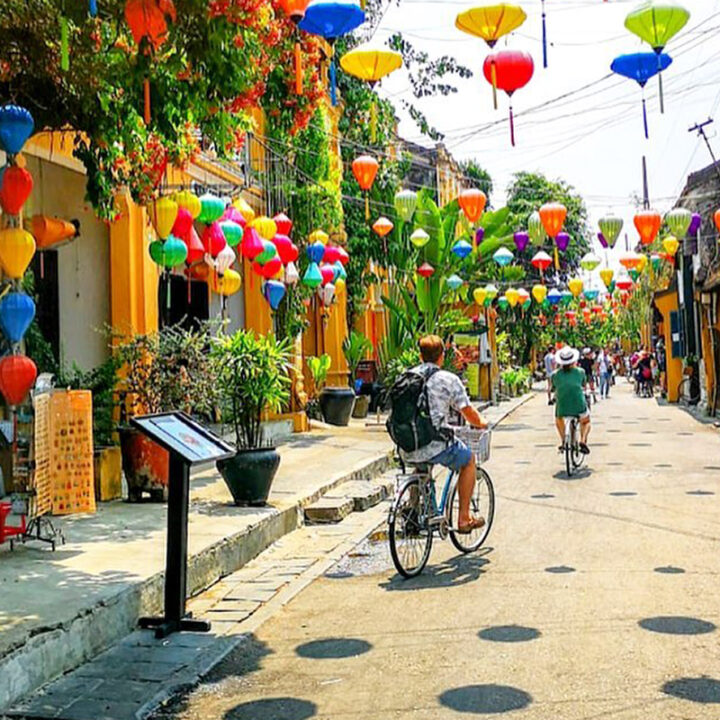Prominent in the Central Vietnam Heritage Journey, Hoi An Ancient Town as a rustic, simple and poetic picture. Whether it is day or night, the ancient town of Hoi An still has different fascinating charms.
In addition to cultural values through diverse architectures, Hoi An also maintains a intangible cultural background. Daily life of local residents with customs, religious activities, folk arts, cultural festivals together with poetic natural landscapes, specialty dishes ..etc.. makes Hoi An increasingly attractive travelers.
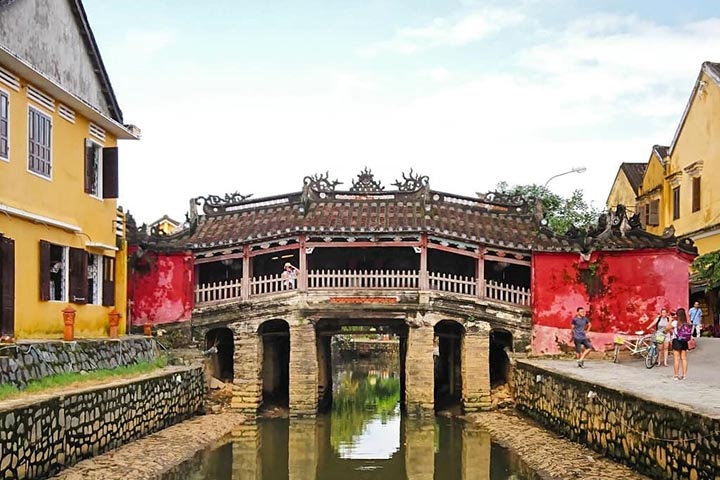
Best time to travel to Hoi An Ancient Town
The best time to visit Hoi An is from February to April every year, it is less rainy, cool climate. Do not go in summer because the temperature is very hot. The rainy season from October to November also has the disadvantage of wet space due to heavy rain.
You should visit Hoi An on the monthly full moon day to attend the old town night. On this occasion, you will have the opportunity to see the red lanterns spread across the street, a typical setting of Hoi An on the occasion of the festival.

Transportation to Hoi An
Air Planes
Hoi An is located in Quang Nam Province but the nearest airport is in Danang (Hoi An is 30km from Danang). Currently airlines such as Vietnam Airlines, Jetstar, Vietjetair all operate routes from Ho Chi Minh City, Hanoi, Hai Phong, Vinh to Da Nang. If you want to buy low price tickets, you should book about 3 to 6 months in advance.
Other transportation: Cars, trains
From Hanoi or Saigon, there are train routes to Da Nang (North – South route), fares range from VND 400,000 to VND 1,200,000 depending on the train type and seat type. It takes 14 to 20 hours to travel from these two cities to Danang by train.
Coach: cost about 400,000 – 500,000 VND. Hoang Long Bus lines, FUTA Bus lines, Mai Linh and Thuan Thao. It takes 18 to 20 hours from Hanoi/Ho Chi Minh to Da Nang.
From Danang
The transit point to Hoi An is mainly Da Nang airport, railway station, bus station. From there you can take a bus / taxi to Hoi An very convenient.
Note: From Da Nang city to Hoi An there are 3 ways:
- You can follow Highway 1 to the south about 27km to Vinh Dien Town and then turn left for another 10km to Hoi An.
- The second road is closer, more empty, going from Da Nang Center – Lê Văn Hiến street – Trần Đại Nghĩa Road – Nguyễn Tất Thành Road (Hội An).
- The easiest road is along the My Khe Beach – Võ Nguyên Giáp street – Trường Sa – Lạc Long Quân – An Bàng Beach (Hội An) – Hai Bà Trưng street.
Tour Coach
If you go to Danang through a tour operator, just follow your tour guide’s instructions. In case you get lost, you should take a picture of license plate.
Taxi
Fares are metered which vary between $3 and $5 for a 10-minute ride to the city center and a 15-minute ride to the seaside:
You may contact one of the following taxi operators:
Taxi Mai Linh – Tel: (+84)236.3.56.56.56
Taxi Tien Sa – Tel: (+84)236.3.79.79.79
VinaSun Green Taxi – Tel: (+84)236.3.68.68.68
Airport Taxi – Tel: (+84)236.3.27.27.27
Taxi Song Han – Tel: (+84)236.3.72.72.72
Dana Taxi – Tel: (+84)236.3.815.815
Motorcycle Taxi
Travelling by motorcycle taxis or Xe ôm is a good way of exploring outside the city centre on a small budget.
Bus
If you want to take a public bus from Danang to Hoi An, you can try the app Danabus via CH Play or App Store. The public bus is available every 15 – 25 minutes.
Grab
Grab is very convenient for every tourist. You can try Grab car or Grab bike. The normal price is around 300,000VND – 450,000VND for Grab car and about 120,000VND for Grab Bike.
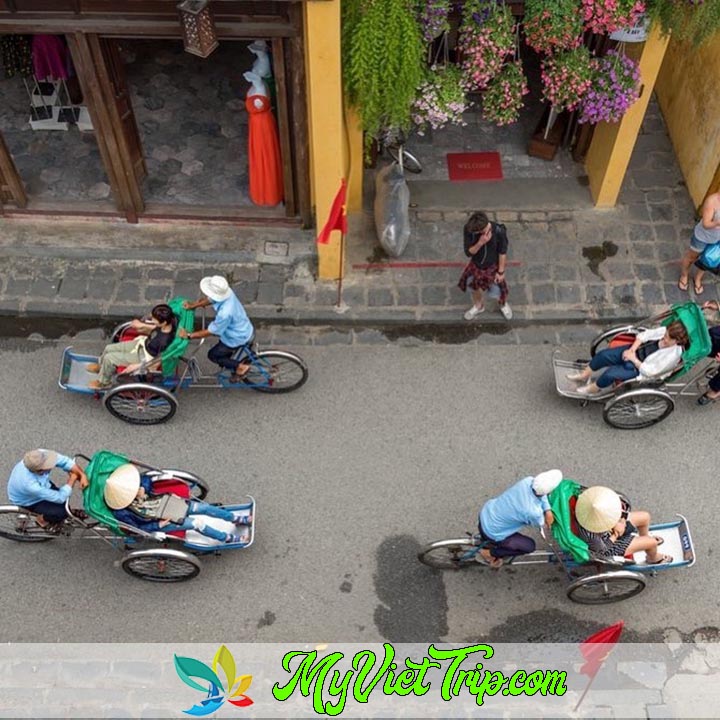
Must go and Must see in Hoi An Ancient Town
Historic, graceful Hoi An (Hội An) is considered the most delightful town in Vietnam. Used to be a busy international commercial main port in the 16th and 17th centuries, this city boasts the beguiling setting of riverside and grand architecture that you hardly find anywhere else in Vietnam (Việt Nam).
Japanese Bridge (Chùa Cầu)
One of Hoi An attractions, the Japanese Bridge is a signature landmark of Hoi An, which is also used widely as an symbol of Hoi An. It was buit by Japanese merchants in 16th century.
Located at the Western corner of Tran Phu (Trần Phú) Street, in the 16th century, this bridge connects the Japanese community on the western side with the Chinese merchant community on the east side of the canal . Though it has been rebuilt a few times since its establishment, it still retains its distinct characters as well as impressive Japanese elements.
The entrances of this bridge are guarded by weathered statues: a pair of monkeys on one side and a pair of dogs on the other side.
- Location: Tran Phu (Trần Phú) Street and Nguyen Thi Minh Khai Street (Nguyễn Thị Minh Khai), Hoi An, Quang Nam, Vietnam
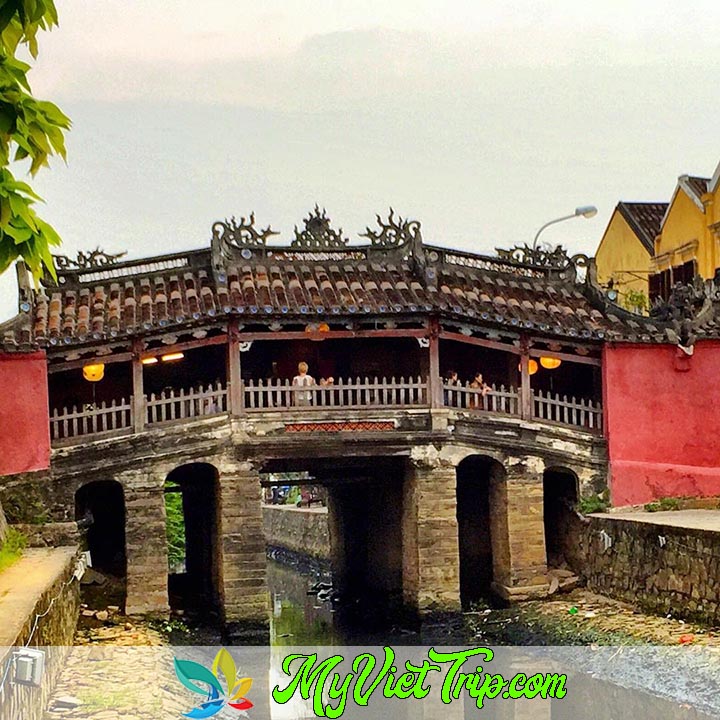
Hoi An Riverside
Hoi An Riverside is where you could sample good coffee, seafood, home-caked and international food as well. Travelers can enjoy the pleasant waterfront region which is the most popular for tourists to dine.
One of the most famous Hoi An attractions is Hoi An Riverside, which is considered as the major landmark in Hoi An. This site is where both modern and traditional boats drop their anchors and where local people go to shop at the wet market daily morning.
The town is reintroducing the presence of colorful and gorgeous hand-crafted lanterns. Especially, on the special nights of a month, hundreds of them hang on windows and verandas as they normally did more than 300 years ago.
With local boats pass through, the view across Thu Bon River reminds the view of the old days in Hoi An. The elegant lamps illuminated nightly are always successful at charming people.
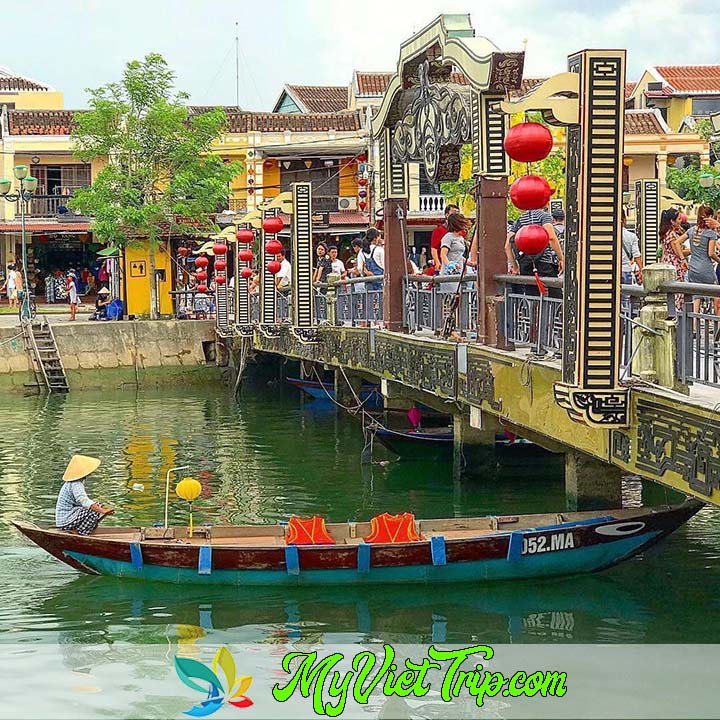
Hoi An Old Town
One of the main trading post from 16th to 17th centuries in Southeast Asia is Hoi An Old Town. This seaside old town is basically a living museum which features with a unique mixture of West and East in the form of its old-town architecture. When it comes to Hoi An attractions, this might be the most well-worth one. There are two great things about Hoi An Old Town:
- It is small and peaceful enough for tourists to walk around on food
- The traffic is not as heavy as in the bigger cities.
Some streets in Hoi An Old Town just allow motorbike and bike traffic and some just allow pedestrian only. All of these features make Hoi An Old Town more inviting for the majority of tourists to Vietnam, particularly those who used to pass through frenetic Hanoi (Hà Nội) or Ho Chi Minh (Hồ Chí Minh) City (also known as Saigon (Sài Gòn)).
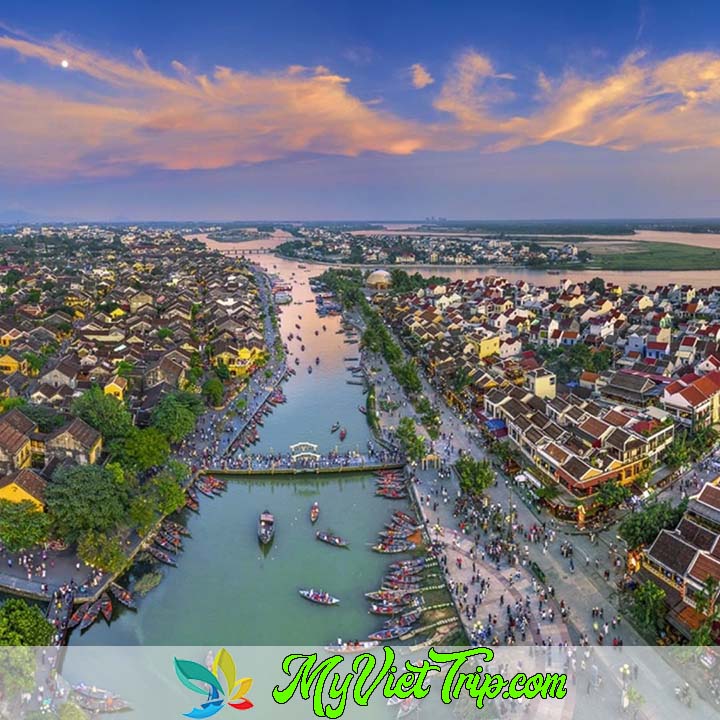
Tan Ky Ancient House
Built nearly 200 years ago, Tan Ky ancient house has typical architecture of Hoi An house with interior divided into many gaps, each with its own function. The front of the house is the gate to open the shop, the back is connected with the river wharf to be the place for importing and exporting goods.
The house is built by traditional materials and crafted by local carpenters and masons, so it has its own characteristics, agile, elegant and cozy, and shows the interaction with the styles. architecture in the area. On February 17, 1990, the ancient house of Tan Ky was granted a National Historical – Cultural Monument.
- Location: 101 Nguyễn Thái Học Street
The Chinese Assembly Halls
Another option among top Hoi An attractions is Chinese Assembly Halls. Built in 1960, The Chinese Assembly Halls is the place in which residents from China could meet up and socialize while living or visiting Hoi An. There are 5 assembly halls established by the Chinese, all are situated on Tran Phu (Trần Phú) Street, and faced Thu Bon (Thu Bồn) River. Recent days, these assembly halls become well-known Hoi An Ancient Town attractions.
In fact, among these five Hoi An assembly halls, the Fujian Assembly Hall might be the most well-known as well as biggest one, which is situated at 46 Tran Phu (Trần Phú) Street. Other assembly halls are Ngu Bang (Ngũ Bang) Assembly Hall (aka Trung Hoa Assembly Hall), Trieu Chau (Triều Châu) Assembly Hall, Quang Dong (Quảng Đông) Assembly Hall, and Hainan Assembly Hall
- Location: 46 Trần Phú Street
The Cantonese Assembly hall was built by the Cantonese Chinese Overseas in 1885, initially to worship Thien Hau Thanh Mau and Confucius, after 1911 to worship Quan Cong and Tien Hien of the state. The rational use of wood and stone materials in the load-bearing structure, decorative details has brought the Assembly Hall a unique beauty. Every year on Nguyen Tieu, Quan Cong (June 24 of the lunar calendar) here is a very grand festival that attracts many participants.
- Location: 176 Trần Phú Street
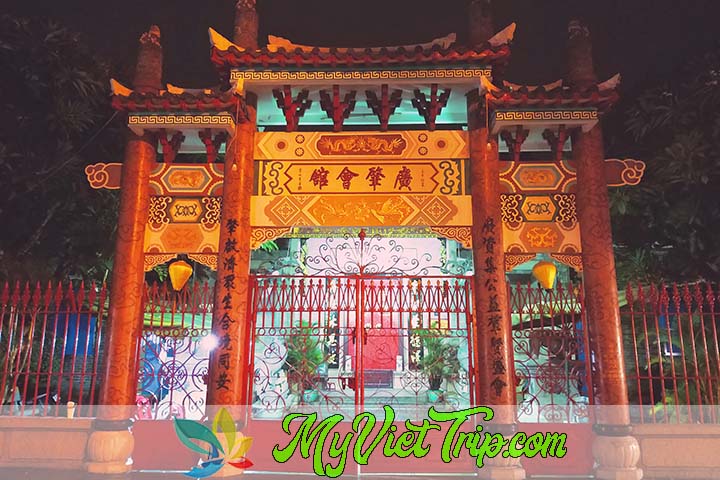
Duc An Old House
The last but not least worth coming destination in this list of Hoi An Ancient Town Attractions is Duc An Old House. With more than 180 years old, it is a charming site decorated with a few attractive pieces of anteak work. This is a place that has welcomed hundreds of tourists to visit and witness the ancient beauty as well as quietness of the moss tile roof every day. It is marked by a series of activities of the Vietnamese Organization – The Vietnam Revolutionary Youth in Hoi An in – in terms of renovation.
- Location: 129 Tran Phu (Trần Phú) Street
Food in Hoi An Ancient Town
Although Hoi An ancient town is small, its culinary culture is extremely plentiful. Here are some delicious dishes and addresses for you to enjoy when coming to this special place:
Hoi An Chicken Rice
With all the meticulous pulling skill in the way of processing, Hoi An people have created a chicken rice dish that is enough to impress people to give it a unique name: Hoi An chicken rice. Hoi An chicken rice served with onion, sour papaya, herbs of Tra Que village, also has a bowl of soup .
- Address: Ba Buoi chicken rice (26 Phan Chau Trinh), Mrs. Huong chicken rice – Sica alley, Ba Minh chicken rice, Mrs. Nga chicken rice…

Cao Lau noodles
Many people who have lived for a long time in the old town said that the Cao Lau Noodles has appeared in Hoi An since the 17th century. Perhaps that is the reason why this dish is heavily influenced by Chinese cuisine as well as Japanese cold udon noodles. However, Hoi An Cao Lau noodles still have its own characteristics and only Hoi An has the true Cao Lau noodles.
Address: It is very easy to find Hoi An Cao Lau noodles, from curbside to restaurants on Tran Phu street, the most famous is Ba Be restaurant, Trung Bac Restaurant…

White Rose Cake
White Rose Cake (Bánh Bao – Bánh Vạc) are two types of bread with similar ingredients, usually eaten on a single plate. The difference is that the Bánh Vạc filling is made from crushed ground shrimp mixed with a little pepper, garlic, onion, lemongrass and esoteric spices. The Bánh Bao filling is made from pork, mushroom, sliced green onions and then fried with esoteric spices. Perhaps this spice is also a reason that Bánh Bao – Bánh Vạc can only eat well when in Hoi An.
Address: White Rose Restaurant on Nhi Trung Street. Here, you can see firsthand the elaborate baking process of the shop.

If you have questions, or want to receive detailed schedule information, travel programs, hotel information … you can feel free to call Mr. Phuoc. I am always happy to give you free information. Thank you for reading this article.


